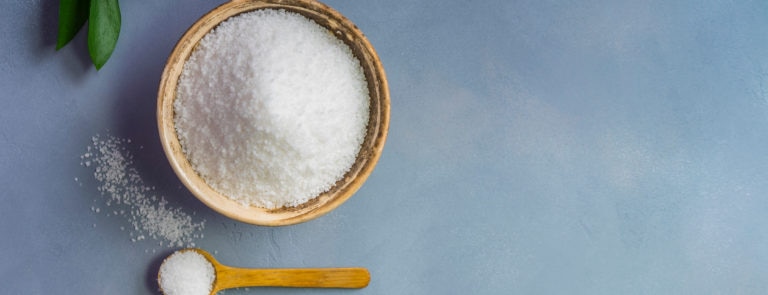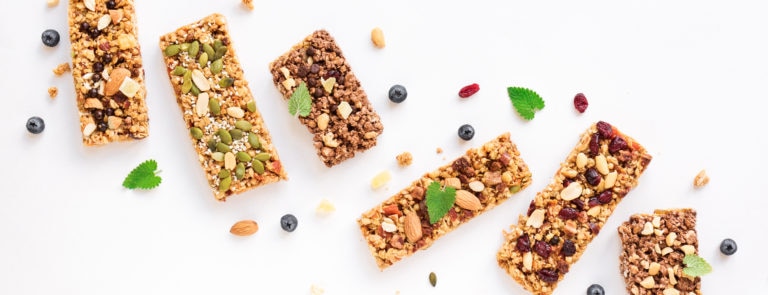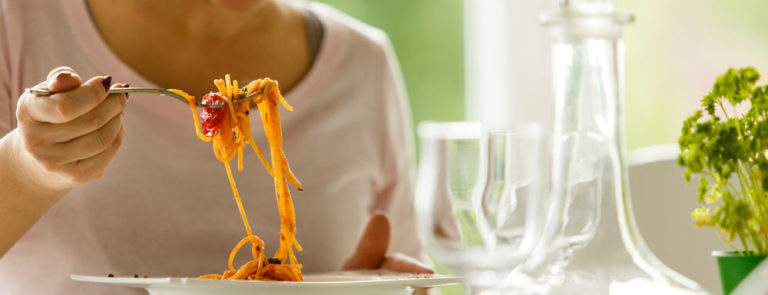Salt is having something of a revival. It was not so long ago that a plain white tub or packet of table salt was the household go-to for adding flavour to meals.
But did you know there are more than ten varieties of edible salt?
1
From kosher salt to pink Himalayan salt, Celtic salt to iodised salt, right through to black lava salt and Persian blue salt.
And you guessed it - these salts come with different benefits and a wide variety of price tags.
Why do we use salt in cooking?
We have been using salt for food preservation and seasoning for thousands of years.
Adding salt to your food is a sure-fire way to enhance its taste. It lifts bland foods and enhances the natural flavours of others.
But salt’s use in food does not end there.
Salt can help control colours in foods (this is particularly useful with preserved meats), help foods get the right texture, bind proteins together, aid fermentation and, as we’ve discussed already, preserve foods.
2
It also prevents the growth of bacteria, making it harder for food to spoil and keeping it safe to eat for longer.
Hang on, isn’t salt bad for me?
Just because we now tend to use a refrigerator instead of salt to keep our food fresh, does not mean we have fallen out of love with salt.
Salt is part of a healthy diet and helps the body to perform important functions.
However, there’s a balance to strike here.
Too much salt can have a detrimental effect on your blood pressure and heart health. Current guidance is that adults should consume no more than 6g of salt a day.
3
What is the difference between table salt, rock salt and sea salt?
Rock salt is mined in its solid form, whereas sea salt is produced by evaporating seawater.
In the production of table salt, the rock salt is processed and many impurities are removed.
The process often removes minerals such as calcium and potassium, and adds other substances (known as anti-caking agents) to prevent clumping. This is so the finely ground salt can flow freely.
4
Table salt often has added
iodine, a mineral added to help address worldwide iodine deficiencies.
5
Since it is extracted by evaporating seawater, the production of sea salt goes through fewer processes than rock salt and is also usually more coarsely ground.
This texture is why high-quality sea salts are often the gourmet choice, thanks to the flavour punches that larger flakes of salt create in a dish.
It is also possible to purchase iodised sea salt - one to look out for if you are wanting to add more iodine into your diet.
Whether you choose a less-refined rock salt or a sea salt, you might find that trace minerals and impurities can affect a salt’s taste.
Some consider the fact that these trace minerals make some salts healthier options compared to heavily processed salts.
But it should be noted that salt itself offers little health advantages. You can easily find the trace minerals it contains in other, healthier foods.
6
Since regular table salt is so heavily processed – evaporated, heated and pumped around multiple times- almost all trace minerals will have been removed.
7
What is Himalayan rock salt?
Himalayan pink salt is a highly regarded special salt, extracted from mines under the Himalayas.
Sometimes known as pink Himalayan sea salt, some believe it comes from the dried remains of an ancient sea, far beneath the Himalayas.
8
This pink sea salt looks pink due to the presence of iron oxide in the area. It can also contain small amounts of calcium, iron, magnesium and potassium, which reduces its sodium content a little.
9
What is kosher salt?
Kosher salt has coarse and rough grains, enjoyed by chefs as it is easy to pick up with your fingers and spread over food.
10
Not usually iodised, the large grains of kosher salt produce a great flavour burst when sprinkled onto foods.
What is Celtic salt?
Celtic sea salt is harvested in the French region of Brittany, following traditional Celtic techniques.
The production of Celtic salt produces a light grey, slightly moist salt which is thought to have a slightly briny flavour.
11
Which salt should I choose?
With such a range of salts available, choosing which one to use can feel a little overwhelming.
Some people love Himalayan rock salt or kosher salt for their flavours or textures in cooking, and some are drawn to flaky sea salt, or a non-iodised
pickling salt.
Shop our range of herbs, spices and seasoning, including salts, to add flavour, texture and even colour to your foods!
Whichever one you opt for, it is important to be aware of your salt intake and make sure you are not forgetting to count processed foods that are high in salt content.
Find out more about
hidden salt in food in our Health Hub article.
Shop Herbs, Spices & Seasoning
Last updated: 8 February 2021
Sources
1
https://timesofindia.indiatimes.com/life-style/food-news/what-is-kosher-salt-and-why-everyone-is-talking-about-it/photostory/74719425.cms
2
https://www.saltassociation.co.uk/education/salt-health/role-salt-cooking
3
https://www.nhs.uk/live-well/eat-well/salt-nutrition/
4
https://121dietitian.com/salt-awareness-week-sea-salt-rock-salt-healthier-options/
5
https://www.who.int/nutrition/topics/idd/en/
6
https://www.heart.org/en/healthy-living/healthy-eating/eat-smart/sodium/sea-salt-vs-table-salt
7
https://www.saltassociation.co.uk/education/make-salt/white-salt-production/
8
https://www.livingproofnyc.com/table-salt-vs-sea-salt-vs-himalayan-pink-salt-what-are-the-differences/
9 https://www.healthline.com/nutrition/different-types-of-salt#pink-salt
10
https://www.thekitchn.com/kosher-salt-where-it-comes-from-why-its-called-kosher-ingredient-intelligence-219665
11
https://www.ittefaqsalt.com/himalayan-salt-vs-celtic-sea-salt/



